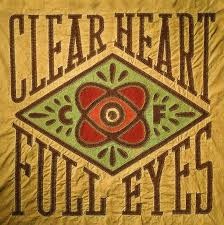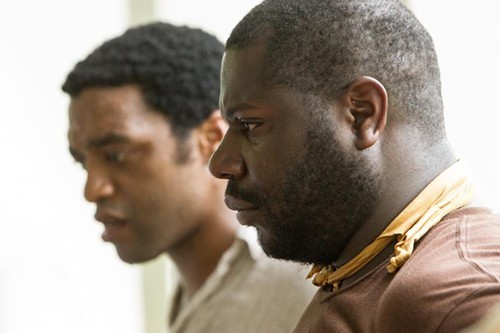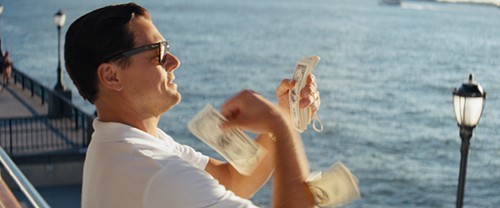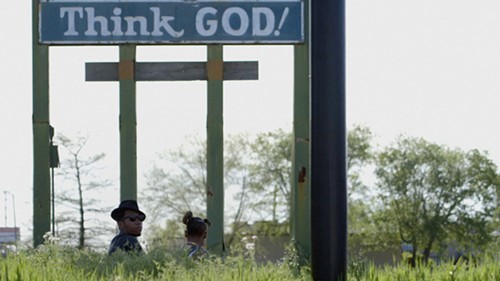I submit that 2013 was the best year in film since 2003 (the latter of which featured the great films City of God, Kill Bill: Vol. 1, Lost in Translation, Mystic River, The Fog of War, The Dreamers, Master and Commander, Dogville, and Hulk and three times as many superbly good movies). I’m ready to coronate 2013 having not yet even seen all of the year’s late-season releases such as The Wolf of Wall Street and Mandela: Long Walk to Freedom; or mid-season indie successes such as Blue Jasmine and Before Midnight; or some I anticipated that slipped through my net, such as the Ryan Gosling diptych The Place Beyond the Pines and Only God Forgives. And don’t get me started on how many I’ve yet to see of Addison Engelking’s list below.
For me, 2013 will especially be remembered for the great films that were dedicated — “from the feet up,” to quote #3 below — to either narrative abstraction or precision. Contrast my #1A film of the year, Gravity, which is possessed with a raw kinetic inertia that becomes the very essence of cinematic adventure catharsis, with my #1B film, 12 Years a Slave, which is a nearly dispassionate slave procedural that elects to let the audience bring the grief, terror, and anger to the experience. Each film takes a different path but winds up in roughly the same place: epoch markers underscoring the power of cinema.
That same notion is the take away of #6, The Act of Killing, a documentary with a subtext about how Hollywood genre films are so potent that they can equally scourge and scour men’s souls. It sounds hokey, but what else to make of the most hair-raising moment of the year, as the sins of a bona fide genocidal monster come forth as bile. (And you know the camera sees a truth, because Anwar Congo’s not that good an actor.)
The films of 2014 have their work cut out for them. To get a peek ahead, make sure to check out the cover story in this edition of the Flyer (page 18). — Greg Akers
Greg Akers’ Top 10
1A) Gravity: The moment it was over, I couldn’t help thinking Gravity was the best movie I’d ever seen. The conclusion did not follow an intellectual comparative analysis, mind you. It was a gut reaction to the most stunning experience I’d had in a theater. I don’t know if I was right or wrong about the feeling, but the film is certainly the most movie movie I’ve been immersed in. Gravity: about birth and rebirth and surviving a mortal emotional wound, but wrapped up in a relentless action marathon. Gravity: In an interstellar burst … I am born again.
1B) 12 Years a Slave: Steve McQueen’s great slave narrative witnesses, without too much art, inhumane institutions that are part of America’s fabric of being. Watching the film, I’m reminded that the 1850s really were not that long ago. To think that this nation has healed all that much from such racial privation is folly — a fact also considered by the terrific films Fruitvale Station and Lee Daniels’ The Butler (both mentioned below). American racial evolution is still basically an amphibious guppy breathing through primordial sludge.
3) American Hustle: David O. Russell’s movie makes the case that cinema is our sexiest medium, and then aggressively proves the theory. American Hustle is a shout-out to those who prefer side boob and tight slacks to actual nudity, aka the 1970s.
4) Zero Dark Thirty: For the rest of the world, Zero Dark Thirty is a 2012 movie, but the film was actually released in Memphis in January 2013. Kathryn Bigelow’s best is an adult conversation about the unholy confluence of geopolitics, power, bureaucracy, and death, aka the 2000s. Related: Look for Spike Jonze’s Her in the top 10 for 2014, even though everyone else in the country has already seen it. Aaaah, Memphis.
5) Fruitvale Station: A week after seeing Fruitvale Station, I wondered when its melancholic power over me would fade. Five months later and I’m still waiting. I can’t stop thinking about the last images and the loss it personalizes.
6) The Act of Killing: The least hilarious picture of the year is an audacious reimagining of the documentary format. Joshua Oppenheimer somehow convinced Indonesian leaders — war criminals legitimized simply by winning the war — to recreate some of their atrocities in the film genre of their choice, including film noir and Hollywood musicals. Packed around those short film products are interviews and making-ofs, which, naturally, feature the maniacs, comfortable in their surroundings, comfortably owning up to what they did. The last act, though, is when the film becomes something beyond an interesting exercise: decades of guilt finally come forth. It’s hardly justice, but it is certainly something.
7) Pacific Rim: The most fun I had all year was Guillermo del Toro’s giant robots vs. giant monsters popcorn flick. Why isn’t giant robots vs. giant monsters the premise of every movie? Because it should be.
8) Stoker: “Sometimes you have to do something bad to keep you from doing something worse.” In Chan-wook Park’s Tennessee-made coming-of-age psychosexual horror Stoker, a mystery is built with glances, hushed whispers, spider crawls, and akimbo camera angles. Eventually, the film gives up its secrets, and after that Stoker becomes ever so mundane instead of impressionistically mad. But it’s all still intoxicating.
9) The Way Way Back: I have not yet given up my hope of giving writer/directors Nat Faxon and Jim Rash a great big bear hug for The Way Way Back, another of 2013’s bildungsromans but featuring a much more sweet finish than Stoker or even The Spectacular Now.
10) Frances Ha: Noah Baumbach/Greta Gerwig’s maxi-mumblecore Frances Ha is a needed corrective to Lena Dunham’s increasingly interminable HBO series Girls. Frances Ha chooses grace over coolness and realistic nonjudgment over clumsily brittle self-reproach. I blame Judd Apatow for Girls‘ latent misogyny. I credit Gerwig for Frances Ha‘s wayward charm.
Honorable mentions: Nebraska, The Hunger Games: Catching Fire, Mud, Dallas Buyers Club, Enough Said, Adore, Amour, Lee Daniels’ The Butler, Inside Llewyn Davis, The Impossible
Special local nods: Two long-misplaced films got notable revivals this year. In October, Indie Memphis and Malco’s Paradiso hosted a screening of He Who Gets Slapped, Lon Chaney’s magnificent 1924 silent film about an abused clown. The Alloy Orchestra accompanied the film with a brilliant live performance. Also this year, local filmmaking lede Craig Brewer re-released the Memphis movie that started his career, The Poor & Hungry. Out of circulation for more than a decade, you can now download it for free or buy it with a host of extras at ThePoorAndHungry.com.
Addison Engelking’s Top 10
1) Holy Motors: Leos Carax’s first feature since 1999 actually consists of several discrete episodes loosely connected by actor Denis Lavant, who plays a major role in most of them. Taken together, they pose a remarkable question: Why worry about what kind of movie you want to see tonight, when Holy Motors offers every kind of movie in one place? Mystery, romance, musical, comedy, fantasy, film noir — all genres are present and accounted for here. And the results are stirring, weird and delightful: No other film I’ve seen inspires automatic writing like, “The indescribably haunting rooftop scene with Kylie Minogue lacks the exuberance of the accordion blues number in the cathedral.”
2) The Grandmaster: There are currently several versions of Wong Kar Wai’s Ip Man biography in worldwide circulation. Thanks to the unforgivably imbecilic Harvey Weinstein, the United States release version is one of the shortest. But The Grandmaster is more than another gorgeous Wong meditation on memory, honor, and skill. It offers the return of the great Ziyi Zhang and is bookended by the two most beautiful action sequences — one in the rain, one near a train — of the year.
3) American Hustle/The World’s End (tie): After rewatching Edgar Wright’s Scott Pilgrim vs. The World this weekend, I felt foolish for giving it an honorable mention in my 2010 Top 10 list. I now think it’s one of the great movies of the decade. (Almost 10 years later, I feel the same way about David O. Russell’s I Heart Huckabees.) Wright’s sci-fi buddy comedy, The World’s End, is both energetic and heartfelt, and if it isn’t a cinematic landmark on the level of Pilgrim or 2007’s Hot Fuzz, well, what is? He’s still the most sophisticated and imaginative comic filmmaker around. In contrast, Russell’s 1970s fantasia American Hustle already looks like a modern classic. Hustle may be unwieldy and hyperbolic, but it includes the best cameo of the year, and it’s one of the rare movies that gets funnier as it goes along. Its perfect final line — “The art of survival is the story that never ends” — fittingly and politely tips its cap to Hitchcock’s North By Northwest. David O. Russell, meet Roger O. Thornhill.
4) Short Term 12: The big hit of the 2013 Indie Memphis film festival (winner of the Audience Award for Narrative Feature) stars Brie Larson as Grace, the committed and probably crazy den mother to a whole host of kids battered and left behind by the system. Fun fact to ponder after this devastating drama ends: Did you know Larson was in 21 Jump Street last year?
5) To the Wonder: Do not sleep on Terrence Malick.
6) Upstream Color: You will be confused by Shane Carruth’s movie at first. You will find it too abstract, too precious, and too clever. You will grow tired of working so hard to put together the pieces, and you may never figure out what exactly that guy with the microphones is doing. But you will not stop turning the movie over in your head once it ends. You will find that its logic, its audacity, and its horror grow more powerful as its ambiguities slowly clear up. You may also start to believe that the water in your glass is poisonous.
7) The East: Writer/actress Brit Marling inches closer and closer to the perfect dime-store thriller in her third collaboration with director Zal Batmanglij, about a government agent infiltrating a group of environmental terrorists. As usual, Marling’s performance is marvelous; no actress today is more intelligent or more mysterious.
8) The Bling Ring/Blue Is the Warmest Color (tie): Sofia Coppola’s nightmare version of the idle super-rich is a deadpan assault on taste, wealth, youth, aging, fame, and modern architecture. But don’t cry, don’t raise your eye; it’s only teenage wasteland. And speaking of teenagers, Blue is a coming-of-age movie disguised as a graphic lesbian romance. Its stark sex scenes may fade, but its reputation as the most psychologically acute breakup film since Albert Brooks’ Modern Romance should only increase.
9) Prisoners: I saw Prisoners on a Wednesday night in late October. About 20 minutes into the film, three or four teenagers came in, sat down a few rows away, and started yukking it up whenever they saw Alex, the developmentally disabled character played by Paul Dano. “Hahahaha, lookit the retard! He’s hilarious!” They didn’t figure out that Alex had just been abducted by Keller Dover (Hugh Jackman), an angry parent convinced that Alex had kidnapped his daughter on Thanksgiving Day, until a few minutes later. Anyway, the kids were having a blast until Jackman grabbed Dano, shoved him up against a wall, picked up a hammer, and started shouting some very unpleasant things. At that moment, the laughter stopped. And as Denis Villeneuve’s somber, distressing thriller continued its descent into the darkest sub-basements of the male psyche, it was never heard again.
10) Pain & Gain: Some critics have already begun to reevaluate and reconsider Ridley Scott’s The Counselor: One year-end poll called it “one of the most radical experiments in Hollywood history.” But defending that collaboration between Cormac McCarthy and the director of Alien is relatively easy. Why not champion something nobody really seemed to like, like Michael Bay’s Pain & Gain? Why not remind people that Bay’s films have been secretly getting better and better? Why not float the idea that Michael Bay’s latest, most outsized tale of idiot misadventure was one of the year’s best? Why not exalt Dwayne “The Rock” Johnson’s sensitive performance as a dimwitted bodybuilder who is in way over his head? Why not assert that Mark Wahlberg is one of the finest American actors? Why are you looking at me like that?
I’ve got scenes to remember:
• Matthew McConaughey covered with butterflies, Dallas Buyers Club
• Solomon Northrup burns a letter, 12 Years a Slave
• Frances calls out parents for talking about their kids, Frances Ha
• The Gorfeins’ cat rides the subway, Inside Llewyn Davis
• James Franco’s gangsta Gatsby monologue, Spring Breakers
Five international movies worth seeking out:
1) Drug War (Johnnie To, Hong Kong/China)
2) Hannah Arendt (Margarethe von Trotta, Germany/Luxembourg)
3) A Touch of Sin (Jia Zhangke, China)
4) Byzantium (Neil Jordan, Ireland/UK)
5) No (Pablo Larraín, Chile) ■




